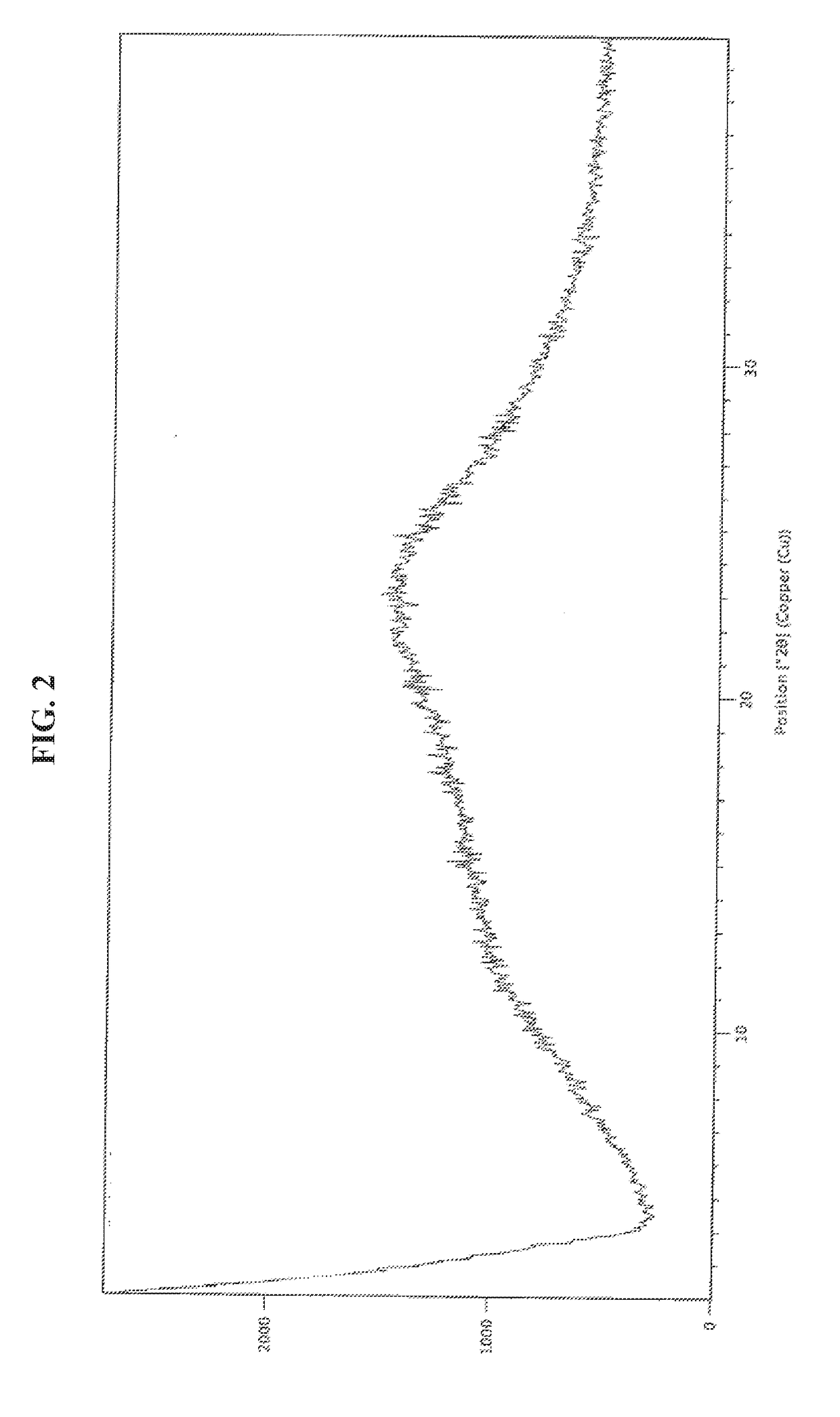Amorphous form of daclatasvir and its salts and process for preparation thereof
a technology of daclatasvir and its salts, which is applied in the directions of organic chemistry, transportation and packaging, and containers preventing decay, etc., can solve the problem that crystalline solids normally require a significant amount of energy for dissolution
- Summary
- Abstract
- Description
- Claims
- Application Information
AI Technical Summary
Benefits of technology
Problems solved by technology
Method used
Image
Examples
example-1
on of Amorphous Solid Dispersion of Daclatasvir Dihydrochloride of Formula (I) with Povidone (K-30 USP)
[0089]2.5 g (0.30 m mol) of daclatasvir dihydrochloride and 25 ml methanol were taken in round bottom flask at 25-30° C. 2.5 g of Povidone (K-30 USP) was added and stirred for 15 minutes. The reaction mixture was filtered and methanol was distilled under vacuum at 50° C. followed by co-distilled with n-heptane (2×25 ml). The residue was cooled to 25-30° C. and treated with n-Heptane (25 ml) and stirred for 30 minutes. The product was filtered and washed with n-Heptane (2×2.5 ml) and dried for 12 hours at 50-55° C. to obtain 4.4 g amorphous solid dispersion of daclatasvir dihydrochloride of Formula (I) with Povidone (K-30 USP). XRD as depicted in FIG. 1.
example 2
on of Amorphous Form of Daclatasvir Dihydrochloride of Formula (I)
[0090]4 g (0.49 m mol) of daclatasvir dihydrochloride and 25 ml methanol were taken in round bottom flask at 25-30°. The reaction mass was stirred for 15 minutes. The reaction mixture was filtered and methanol was distilled under vacuum at 50° C. followed by co-distilled with n-heptane (2×4 ml). The residue was cooled to 25-30° C. and treated with n-Heptane (40 ml) and stirred for 30 minutes. The product was filtered and washed with n-Heptane (2×5 ml) and dried for 12 hours at 50-55° C. to obtain 3.4 g amorphous form of daclatasvir dihydrochloride of Formula (I). XRD as depicted in FIG. 2.
example 3
on of Amorphous Form of Daclatasvir Dihydrochloride of Formula (I)
[0091]4 g (0.49 m mol) of daclatasvir dihydrochloride and 20 ml isopropyl alcohol were taken in round bottom flask at 25-30° C. The reaction mass was heated at 70-75° C. and 3.2 ml water was added and stirred for 15 minutes. The reaction mixture was cooled to 50° C. and solvent was distilled under vacuum at 50° C. The residue was treated with Heptane (40 ml) at 25-30° C. and stirred for 30 minutes. The product was filtered and washed with n-Heptane (2×5 ml) and dried for 12 hours at 50-55° C. to obtain 3.0 g amorphous form of daclatasvir dihydrochloride of Formula (I). XRD as depicted in FIG. 3.
PUM
| Property | Measurement | Unit |
|---|---|---|
| water content | aaaaa | aaaaa |
| RH | aaaaa | aaaaa |
| temperature | aaaaa | aaaaa |
Abstract
Description
Claims
Application Information
 Login to View More
Login to View More - R&D
- Intellectual Property
- Life Sciences
- Materials
- Tech Scout
- Unparalleled Data Quality
- Higher Quality Content
- 60% Fewer Hallucinations
Browse by: Latest US Patents, China's latest patents, Technical Efficacy Thesaurus, Application Domain, Technology Topic, Popular Technical Reports.
© 2025 PatSnap. All rights reserved.Legal|Privacy policy|Modern Slavery Act Transparency Statement|Sitemap|About US| Contact US: help@patsnap.com



